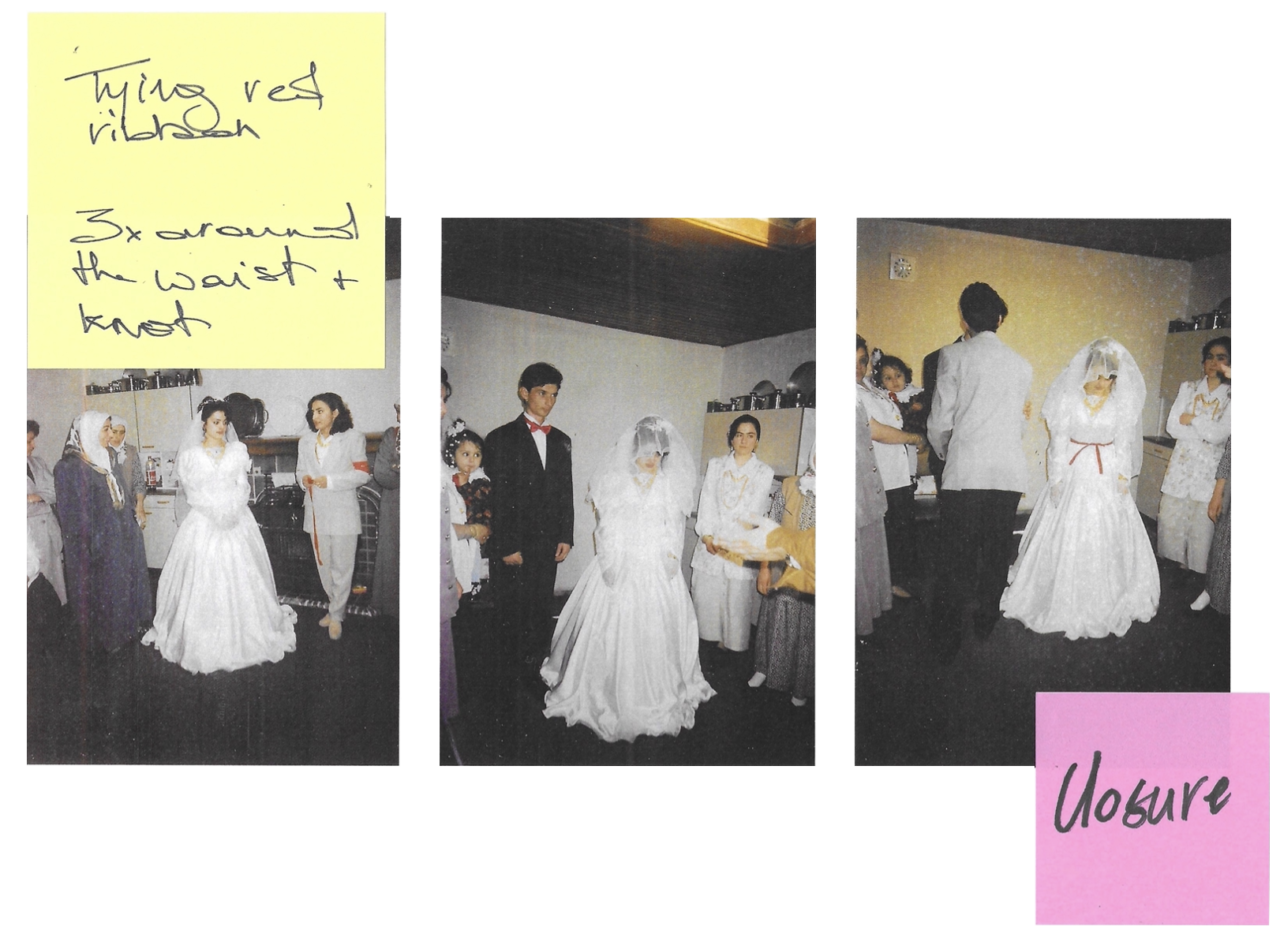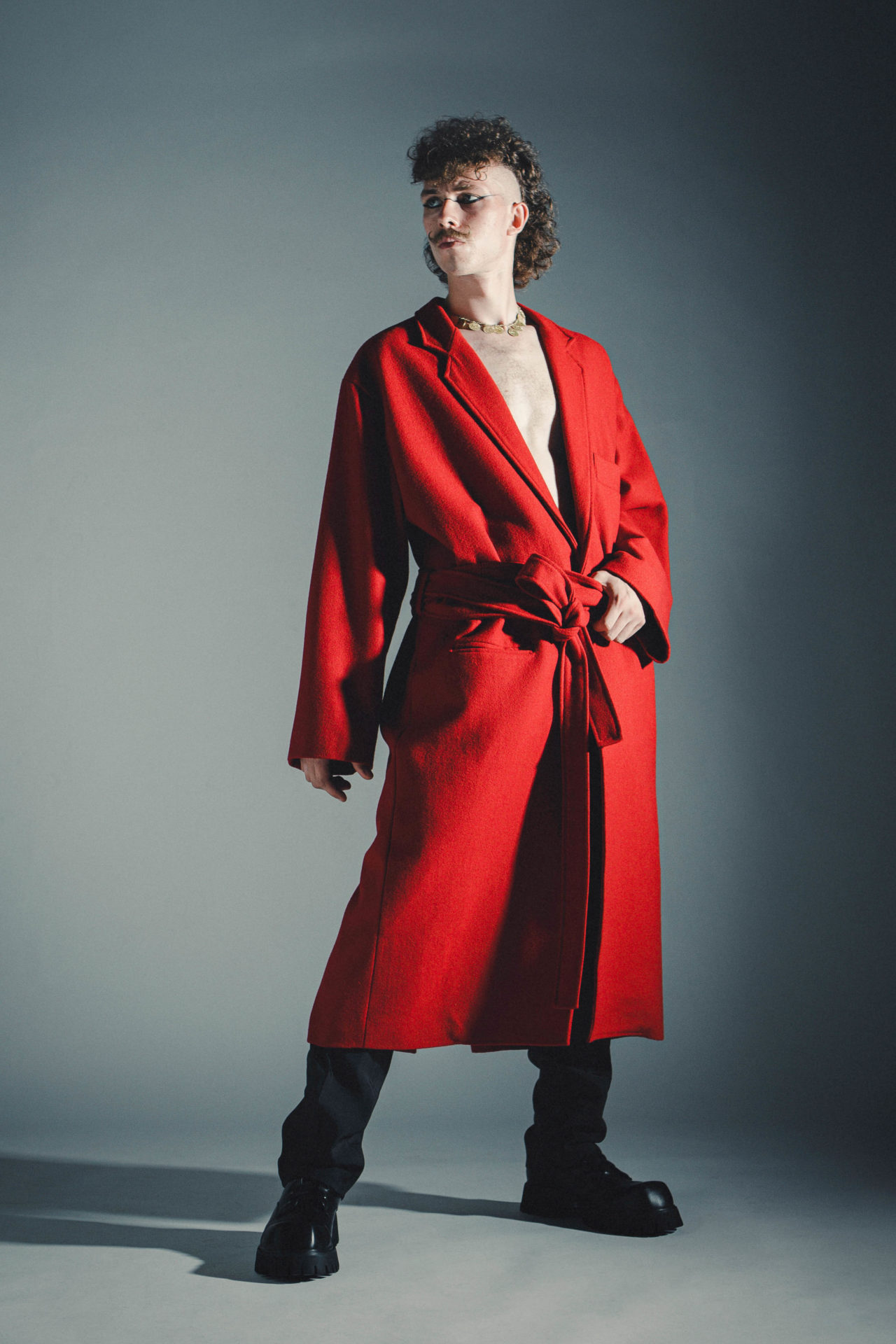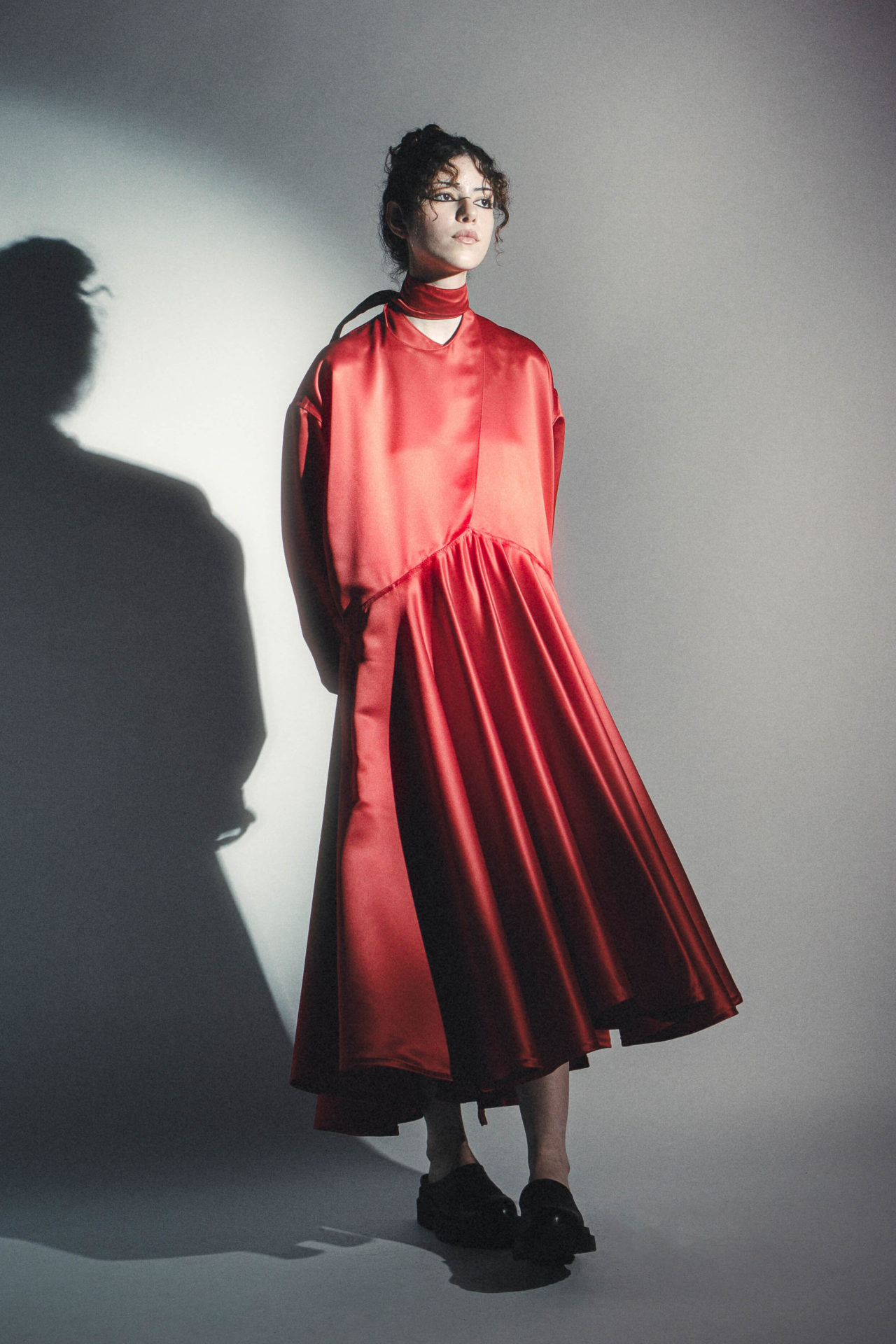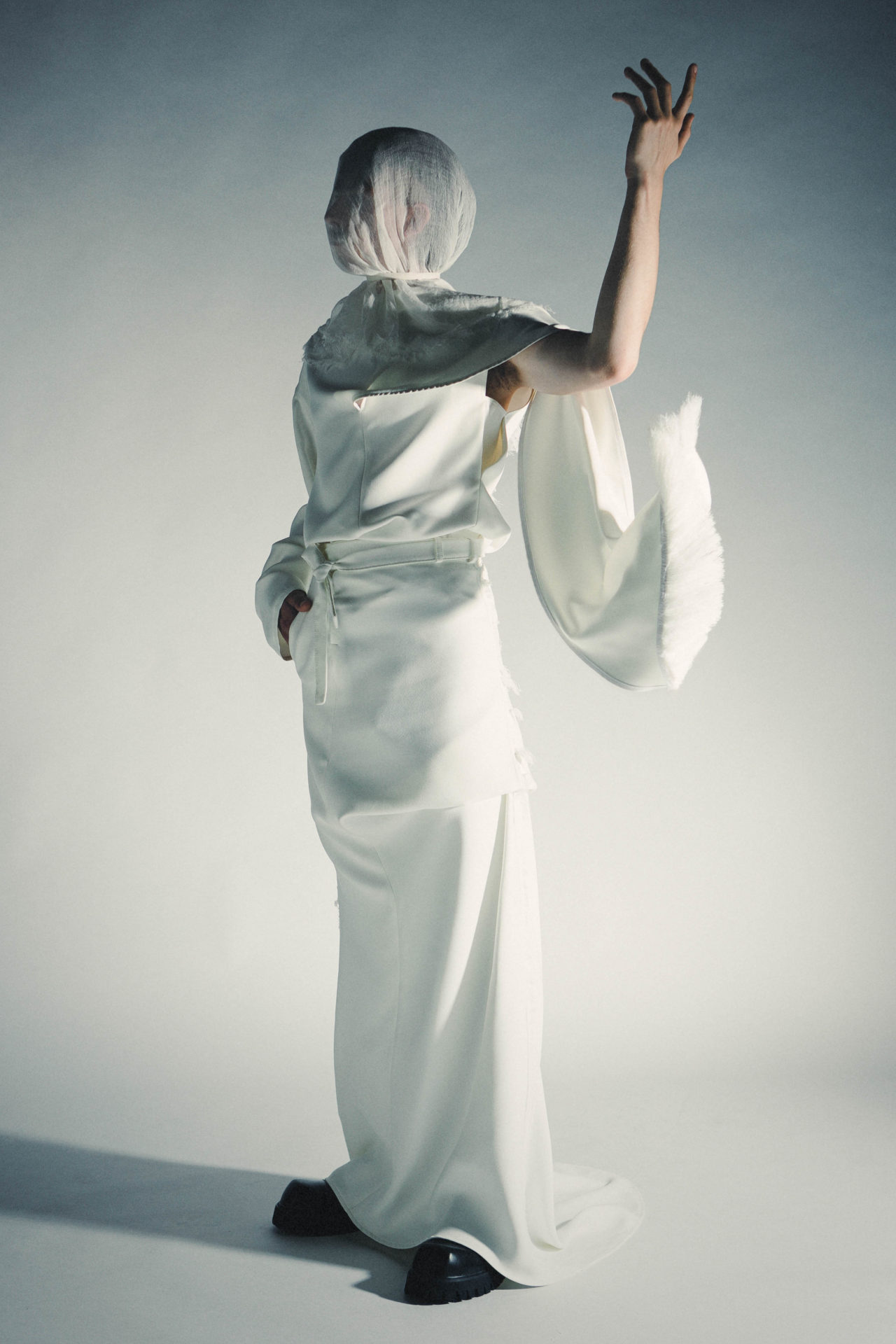ÜÇ

Project details
- Year
- 2023
- Programme
- Bachelor – Fashion Design
- Practices
- commercial
- Minor
- Branding
As a fashion designer who is involved in materializing through textiles and clothing, “ÜÇ” explores the main themes of gender and heritage through my memories, experiences, and understanding of traditional Turkish weddings as a way to situate the development of a new identity.
Exploration of Turkish weddings through my unisex identity.
Being born to Turkish parents in Belgium and having a different nationality than my heritage distorted my perception of who I am and where I belong. This clash later applied to my gender expression as well, I feel too masculine to be feminine and too feminine to be masculine. Both these contrasts, within my nationality and gender identity, felt triggering at first, but later became something I could embrace.
My research delves into to evolution of Turkish wedding traditions, cherished as the only traditionally spent days back home while embracing the fluidity of my identity. Due to my interest in clothing functioning in the everyday, I took a more intuitive approach while draping on my own body as my approach as a designer has shifted to a “Would I wear it myself?” – mentality, rather than only decontextualizing the ‘image’. This method allowed me to materialize my findings, explore different alter egos, and celebrate the power of self-expression through clothing.

Going through 3 draping sessions, I noticed only one tradition being applied the same way it used to be in the past, which happens to be the red ribbon tradition. The red ribbon is a tradition that is practiced on the wedding day when the groom picks the bride up from her parents’ house. The bride waits inside with her white veil and the groom goes to the bride’s side, where the bride’s eldest brother or father ties a red bow by twisting it 3 times around her waist, symbolizing her virginity.

“ÜÇ” became a ready-to-wear collection blurring gender roles, that contains various influences from wedding traditions. Notably, the triple twist and tie gesture from the red ribbon tradition gained functional value by using it as a closure and tailoring element replacing traditional zippers and buttons, ripped from its anti-feminist meaning.
All the closures on the neckline, waist, and cuffs ended up having a long strip that you can twist three times and finish by a knot, you can twist two or three times depending on the garment, some closures are a part of the twist while others have an extra strip sewn on it.












